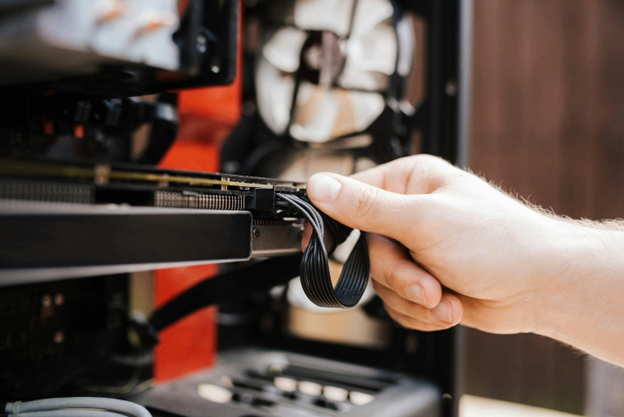Eco-Friendly Ways to Upgrade Your Electronics
In today’s fast-paced world, upgrading electronics has become routine. However, frequent upgrades contribute to a growing environmental issue—e-waste. By choosing eco-friendly methods when upgrading, you can minimize this impact and make responsible choices. There are various ways to enjoy the latest technology while reducing your footprint. This article explores practical, sustainable options that keep old devices out of landfills and promote greener practices in tech.
Assess If You Really Need an Upgrade
Before deciding to upgrade, consider if it’s truly necessary. Many devices continue to work effectively with simple tweaks or upgrades. For instance, updating your operating system or adding more storage can extend a device’s lifespan without requiring a full replacement. Replacing parts like batteries or adding memory can improve performance at a fraction of the cost, keeping your device functional and reducing waste.
A thoughtful assessment of your current tech can prevent unnecessary purchases and help the environment. By maintaining devices longer, you cut down on demand for new products and limit e-waste.
Consider Trading or Selling Old Devices
If you decide that an upgrade is necessary, trading in or selling your old devices is a responsible way to give them a second life. This option keeps electronics in circulation, reducing the need for new manufacturing and minimizing waste. Many companies offer trade-in programs, allowing you to exchange old tech for credit towards a new purchase or for cash.
For example, PayMore provides a convenient way to trade in used electronics, promoting an eco-friendly approach by reselling, refurbishing, or recycling devices. With services like these, you can make some money back while making sure that your old device doesn’t end up in a landfill. Trading in or selling tech supports sustainable practices and encourages a circular economy for electronics.
Buy Refurbished or Certified Pre-Owned Electronics
Another eco-friendly upgrade option is purchasing refurbished or certified pre-owned devices. These products have undergone testing and repairs to meet quality standards, making them reliable and cost-effective choices. Buying refurbished helps reduce demand for brand-new devices, which require significant resources to manufacture.
Refurbished devices are widely available from online retailers, electronics stores, and even certified resellers. Laptops, smartphones, and tablets are often sold in excellent condition, providing the latest technology without the environmental impact associated with new production. Opting for pre-owned devices is a simple way to enjoy an upgrade while supporting sustainable tech practices.
Choose Energy-Efficient Devices
When upgrading to new electronics, consider devices that are energy-efficient. Energy-efficient models, often certified by programs like Energy Star, consume less power than standard devices. This choice benefits the environment and can reduce your electricity costs.
Many modern devices come with energy-saving features, such as low-power modes or efficient batteries. For instance, laptops and smart TVs often include these options, allowing users to enjoy high performance with lower power consumption. By choosing energy-efficient electronics, you support a sustainable lifestyle and contribute to lower greenhouse gas emissions.
Donate Usable Devices to Charities or Organizations
If your old device still works well but you’re ready for an upgrade, consider donating it. Donating electronics to charities or community organizations is a meaningful way to support people in need while keeping usable tech out of landfills. Schools, libraries, and nonprofit groups often accept devices like computers, tablets, and phones, which they use to improve access to technology within their communities.
By donating, you’re helping bridge the digital divide, making technology accessible to those who may not have it otherwise. Reach out to local charities or organizations to see what kind of devices they accept and the condition they require. Some organizations may even offer free pickup or drop-off locations to make the process easier. This simple step can make a big impact, giving your device a second life and supporting valuable causes.
Recycle Responsibly Through E-Waste Programs
For devices that no longer function, responsible recycling is key. E-waste programs safely handle electronics, preventing toxic materials like lead and mercury from entering the environment. Many manufacturers, retailers, and local waste facilities offer e-waste recycling programs, allowing you to dispose of your devices in an eco-friendly manner.
Some major electronics stores, for instance, provide take-back programs for old devices, where they’ll recycle them responsibly or, in some cases, refurbish them for reuse. Certified e-waste recycling centers are also available in many areas, often listed online by city or state agencies. Before dropping off your device, look for certified recyclers who adhere to environmental standards, as these facilities make sure that hazardous components are handled and disposed of properly. By recycling through these programs, you help prevent e-waste pollution and support a cleaner environment.
Opt for Modular or Upgradeable Devices
When purchasing new electronics, consider choosing modular or upgradeable devices. Modular tech is designed to allow easy replacement or upgrading of parts, which can significantly extend the device’s lifespan. For instance, laptops with accessible memory or storage components let you swap out these parts as needed, rather than replacing the entire device when it becomes outdated or slow.
Some smartphones and computers are also designed with replaceable batteries or modular components, making them more sustainable choices. By investing in devices that allow upgrades, you reduce the need to buy entirely new equipment every few years. This approach helps conserve resources and limits e-waste. When shopping, look for brands or models that emphasize repairability and modularity, as these products not only support sustainable habits but can also prove cost-effective in the long run, reducing the frequency of full device replacements.
Upgrading electronics can be exciting, but it’s essential to consider eco-friendly options that reduce waste and protect the environment. From evaluating whether you truly need an upgrade to responsibly recycling old devices, these steps can make a difference. Choosing sustainable ways to manage your tech benefits the planet and can also save you money, support communities, and extend the lifespan of valuable resources. Embracing these practices allows you to enjoy the latest in technology while making choices that align with a greener future.




